
views
Providing Food

Purchase pre-made nectar from a pet store. Nectar is the main source of food for lorikeets kept in captivity. Without nectar, your lorikeet will not thrive and could possibly die. To serve your lory nectar, simply follow the directions on the product you purchase. Some popular types of products include: Liquid foods that don't require you to add water. Dry formulas that must be mixed with water and frozen.
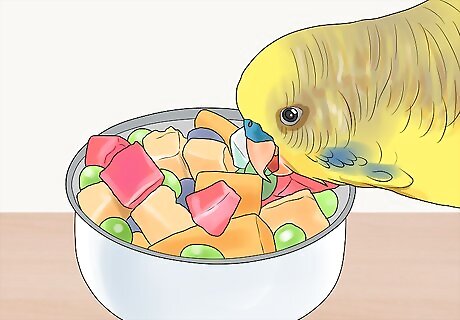
Give your lorikeet fruits. Fruits should be a major supplement to your lorikeet's nectar diet. Serve fruit salad-type meals in a small serving dish in addition to a full serving of nectar. The process of providing your bird fruit should be an active one – try different fruits until you find ones they like. However, make sure they eat several types of fruit instead of just one. You might find that they like overripe fruit instead of ripe fruit. Cut fruit into small pieces – no bigger than a half to a quarter inch cube (6 mm to 12 mm). Offer your bird apple cherries (without pits), pears, apricots, plums, figs, grapes, raspberries, grapefruit, and different types of melon.
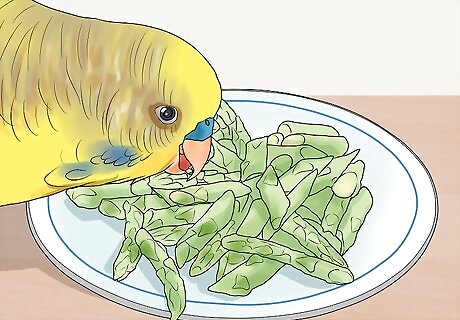
Provide vegetables. Serve sliced, shredded, or diced vegetables as a supplement to your lory's overall diet. Vegetables should not constitute more than a fifth of your bird's diet. However, vegetables can provide valuable vitamins and nutrients your bird does not get elsewhere. Like with fruit, serve vegetables in very small pieces. Consider providing your lory with bok choy, peas, asparagus, corn, cucumber, kale, broccoli, parsnip, or zucchini. Avoid avocado.
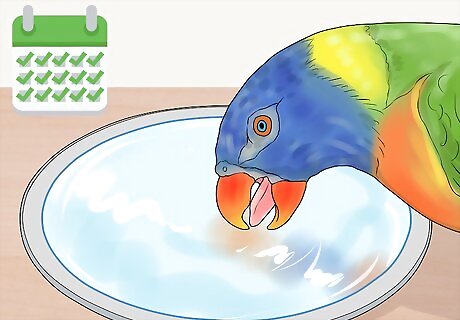
Provide fresh water every day. Fresh water should be served in a shallow water dish. You should change the water and wash the dish every day. In addition, depending on the size of the dish and your bird, monitor the dish to make sure there is enough water throughout the day.
Timing Feedings
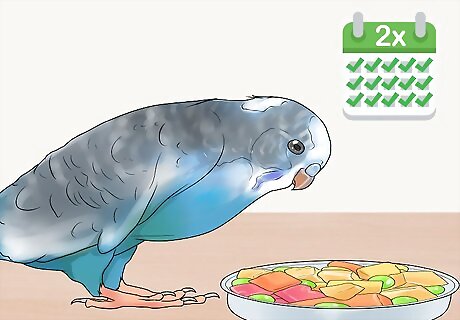
Provide food at least twice a day. Because of the nature of the lory's feeding habits, you should provide your bird with food at least twice a day. This will allow your bird to feed for a couple of hours at a time before you remove or replace their food. In addition, providing your bird with food throughout the day will mimic the lory's foraging habits in the wild. Put food out fresh in the morning and in the late afternoon. In addition, if you can, provide your lorikeet fresh food in the middle of the day.

Change the food every few hours. Lories will thrive best with fresh food. Because of this, you should change their food every few hours. In addition, because lory food consists of fresh fruits, vegetables, and nectar, it could develop bacteria after a couple of hours. This could wind up making your bird sick. As a result, discard any uneaten lory food after three to four hours.
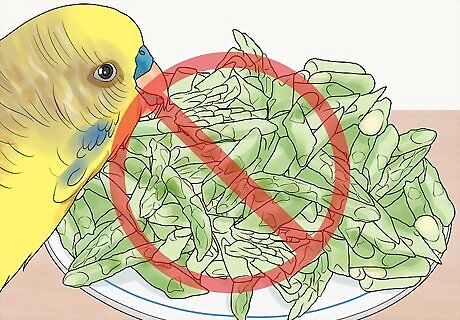
Avoid overfeeding. Observe your bird's eating habits. If you notice that there is a lot of food left after your bird has eaten, you should reduce the amount of food you provide to your bird. In addition, if you notice your bird growing larger, you should consult your vet about reducing the amount of food you provide your lory.
Maintaining Health and Safety

Clean the dishes you use to feed your lorikeet. Like with your own food, you should wash lory serving dishes after every use. This is because bacteria can quickly grow on uncooked fruits, vegetables, nectar, and pollen. If you don't clean your serving dishes properly, your lory could become sick.
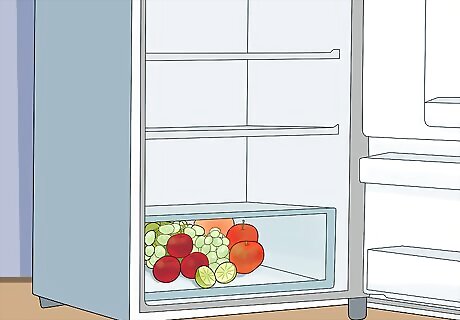
Store your lorikeet food properly. Keep fruits and vegetables in a refrigerator if appropriate. If fruits or vegetables begin to spoil, discard them. In addition, keep nectar or pollen refrigerated or frozen as indicated by the directions on the product. Finally, pay attention to use-by dates, and discard any nectar or pollen products when they are no longer good.

Avoid feeding them seeds. While some lorikeets may snack on different seeds from time-to-time, their gizzards are often not powerful enough to crush most seeds. As a result, lorikeets do not depend on seeds as a substantial part of their diet. If you feed them a lot of seeds, they will not be able to get enough nutrition to thrive. As an option, you can provide your lorikeet with soft seeds every so often.

Keep your lorikeet away from dangerous plants. There are many plants that could hurt or kill your lorikeet. As a result, you need to be diligent about keeping dangerous plants out of your lorikeet's habitat. Some dangerous plants include: Azalea Buttercup Cactus Cedar Clover Mimosa

Provide the right kinds of food for wild lorikeets. Wild lorikeets require some special precautions. Plant flowers that the birds are attracted to naturally, such as bottlebrush plants, banksias, and grevilleas. If you offer sugary liquid to the birds, then make sure to keep the feeders extremely clean. Lorikeets may get sick and even die if the feeder is not clean.














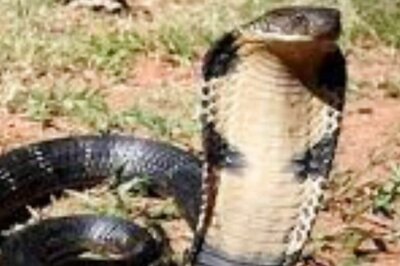

Comments
0 comment